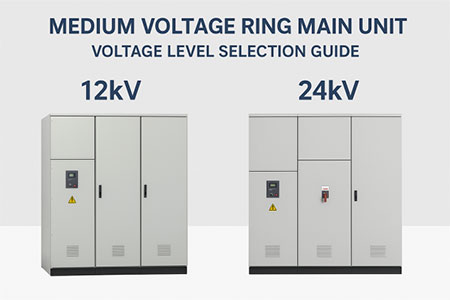When selecting a Medium Voltage Ring Main Unit (RMU), one of the most frequently discussed topics is the choice of voltage rating. Among common configurations, 12kV and 24kV RMUs are widely used in distribution networks, renewable energy systems, and industrial substations. Understanding the difference between these levels is essential for ensuring safe operation, cost effectiveness, and future scalability.
The key consideration is the system design. A 12kV RMU is often sufficient for standard urban and industrial distribution networks where short cable lengths and stable loads are expected. It provides reliable performance with compact structure and familiar installation practices. In many utility sectors, 12kV remains the most standardized choice.
On the other hand, a 24kV RMU is typically used when the grid requires longer distribution distances, higher capacity expansion potential, or integration with renewable energy sources such as wind and solar. The higher voltage level allows more efficient power transmission with reduced losses and may support future load growth without requiring major infrastructure modifications.
Another factor is site environment. In areas with higher altitude, strong electromagnetic interference, or harsh climates, equipment insulation and clearances may require the enhanced safety margins provided by 24kV units.

In summary, the decision between 12kV and 24kV RMUs is not simply about selecting a higher rating. It should be based on actual network requirements, supply planning, and long-term development considerations. Buyers often benefit from consulting with professional manufacturers who can provide configuration analysis and model recommendations.
Putai provides medium voltage distribution equipment that focuses on practical reliability and compatibility across standard installation environments. Our RMU solutions support multiple voltage levels and can be tailored for utility, industrial, and renewable energy applications.